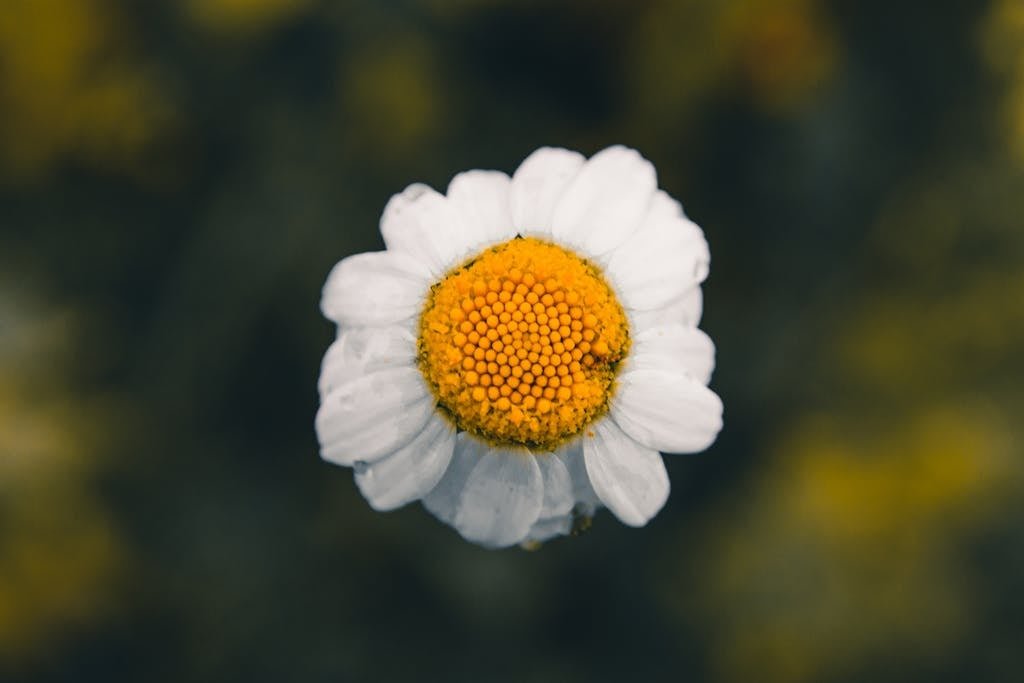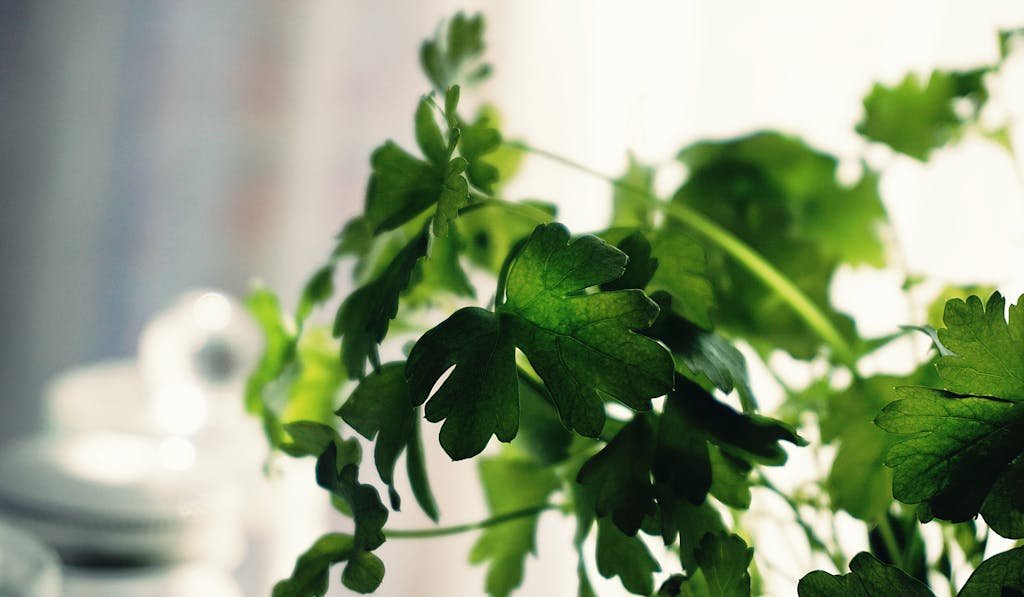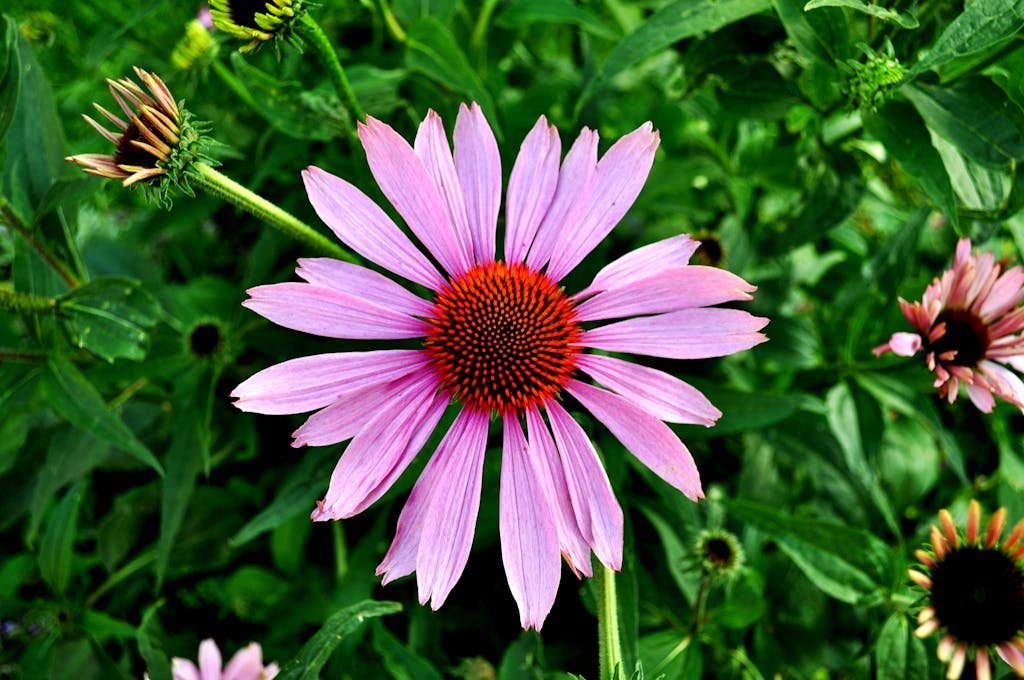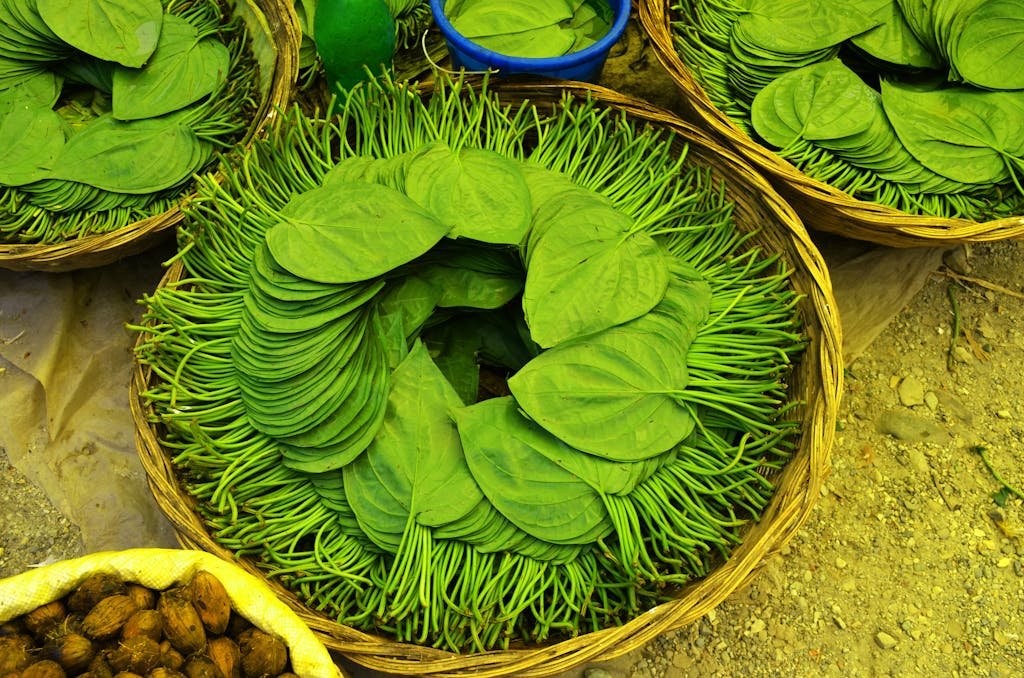German Chamomile (Matricaria recutita)
German Chamomile, Matricaria recutita, isn’t just a pretty face in the garden. It’s a powerhouse of benefits, steeped in history and packed with medicinal properties. Known for its delicate, daisy-like flowers and sweet, apple-like fragrance, it’s been a staple in herbal medicine cabinets around the world.
This versatile herb does more than just soothe a restless mind or calm an upset stomach. It’s a testament to nature’s ability to provide healing and comfort. As we dive deeper into the wonders of German Chamomile, you’ll discover why it’s cherished by herbalists and gardeners alike.
Key Takeaways
- German Chamomile’s Rich Historical and Medicinal Background: Matricaria recutita has been revered since ancient times for its healing properties, playing a significant role in traditional medicine across various cultures, and it remains a subject of scientific studies today.
- Distinctive Physical Characteristics: Known for its delicate, daisy-like flowers and sweet, apple-like fragrance, German Chamomile thrives in temperate climates and is identifiable by its feathery leaves, branched stems, and the potent essential oils found in its blooms.
- Comprehensive Medicinal Benefits: It exhibits a wide array of therapeutic effects, including anti-inflammatory, antispasmodic, and sedative properties, making it beneficial for treating skin irritations, muscle and menstrual pain, anxiety, insomnia, and digestive issues.
- Versatile Uses in Herbal Medicine: Extensively applied in treating a range of conditions from dermatological to gastrointestinal and psychological, its bioactive compounds like chamazulene, bisabolol, and flavonoids contribute significantly to its efficacy.
- Easy Cultivation Tips: German Chamomile is straightforward to grow, requiring minimal care and thriving in well-drained soil under full sun, making it a rewarding addition to gardens with its versatile uses and minimal maintenance requirements.
- Ongoing Interest and Research: Continuous research into Matricaria recutita’s bioactive compounds and their therapeutic effects highlights the herb’s potential in bridging traditional remedies and modern healthcare practices.
History of German Chamomile
German Chamomile, scientifically known as Matricaria recutita, boasts a rich history dating back to ancient civilizations. Its journey through time reflects its resilience and the enduring belief in its medicinal properties. Originating from Europe and Western Asia, it quickly found its way into various cultures due to its versatile applications.
In ancient Egypt, German Chamomile was revered, not just for its healing properties, but also as a symbol of the sun god, Ra. This highlights the esteemed position it held in one of the earliest known societies to practice herbal medicine. The Romans, known for their advanced medicinal practices, utilized this herb extensively. They appreciated its value in brewing tea, as a fragrance, and recognized its soothing effects on the mind and body.
The Middle Ages saw German Chamomile gain prominence in Europe as a staple in herb gardens for its health benefits. Herbalists of the time documented its uses in treating a myriad of conditions—from skin inflammations to digestive troubles. This period significantly contributed to the herb’s reputation, cementing its place in the annals of medicinal history.
Scientific studies began to explore its applications in modern medicine. Research published in Pharmacology and Therapies highlighted its potential in treating anxiety and insomnia, validating centuries-old practices. Another study in the Journal of Agricultural and Food Chemistry delved into its antioxidant properties, offering insights into its ability to combat inflammation.
The evolution of German Chamomile’s uses over the centuries underscores its adaptability and the ongoing interest in its therapeutic benefits. From ancient rituals to contemporary scientific research, it continues to be a focal point in the study of herbal medicine, bridging the gap between traditional remedies and modern health care practices. Its longstanding history serves as a testament to its effectiveness and underscores the natural partnership between humans and the healing powers of the earth.
Characteristics of Matricaria Recutita
German Chamomile, scientifically known as Matricaria recutita, is not just another herb; it’s a powerhouse of soothing properties that have made it a cornerstone in herbal medicine. This plant is distinctive for its delicate apple-like fragrance and daisy-like flowers, featuring white petals circling a yellow disk. Thriving in temperate climates across Europe, Asia, and North America, Matricaria recutita is highly adaptable, growing in well-drained soil under full sun.
The plant reaches up to 60 cm in height, showcasing feathery leaves and branched stems, which support the weight of its flower heads. These blooms, which appear in the early summer and continue into the fall, are not only appealing to the eye but are the main source of its medicinal properties. The essential oils and flavonoids found within the flowers are potent natural remedies, supporting Matricaria recutita’s acclaim among herbalists.
Research underscores the importance of Matricaria recutita’s bioactive compounds. Studies identify chamazulene, bisabolol, flavonoids, and coumarins as key constituents that contribute to its anti-inflammatory, antispasmodic, and sedative effects. For instance, chamazulene offers potent anti-inflammatory action, while bisabolol is known for its soothing and antimicrobial properties. These compounds interact synergistically, offering a holistic approach to managing conditions such as anxiety, insomnia, and skin irritations.
- Anti-inflammatory Action: Chamazulene
- Soothing Properties: Bisabolol
- Antioxidant Content: Flavonoids
- Sedative Effects: Coumarins
As research into Matricaria recutita continues, the depth of its potential is increasingly recognized in the scientific community. Its adaptability and the complex interaction of its compounds with the human body make it an herb of ongoing interest and potential. Whether used in teas, tinctures, or topicals, German Chamomile remains a testament to the enduring partnership between humans and the healing powers of nature, offering relief and comfort through its unique composition.
Medicinal Properties of German Chamomile
German Chamomile, known scientifically as Matricaria recutita, boasts a plethora of medicinal properties that have been revered through centuries. Its uses range from soothing skin irritations to calming nervous system disorders, making it a versatile herb in therapeutic practices. The bioactive compounds found in German Chamomile, such as chamazulene, bisabolol, flavonoids, and coumarins, are the keystones behind its potent medicinal virtues.
Notably, chamazulene and bisabolol are praised for their anti-inflammatory and healing effects on the skin. These components reduce irritation and expedite the healing process of minor wounds, burns, and skin conditions like eczema. Meanwhile, the flavonoids in German Chamomile contribute to its ability to soothe muscle spasms and menstrual cramps, offering a natural remedy for discomfort.
The calming effects of German Chamomile on the nervous system are well-documented. Research has shown that this herb can significantly reduce symptoms of anxiety and insomnia, making it a valuable alternative to conventional medications for those seeking natural solutions. Its sedative properties are attributed to the flavonoid content, which interacts with the body’s benzodiazepine receptors to promote relaxation and improve sleep quality.
In addition to mental well-being, German Chamomile has applications in gastrointestinal health. It’s known to ease digestive disturbances, including gas, bloating, and mild gastrointestinal infections. The anti-inflammatory compounds assist in soothing the digestive tract, thereby improving overall digestive function.
Research continues to uncover the vast therapeutic potential of Matricaria recutita. As studies delve deeper into its bioactive compounds, the breadth of German Chamomile’s medicinal applications becomes increasingly evident.
- Skin Health: Anti-inflammatory, aids in healing of wounds
- Muscle and Menstrual Pain: Soothes spasms and cramps
- Nervous System: Reduces anxiety and improves sleep
- Digestive Health: Eases digestive disturbances
With its wide array of health benefits, German Chamomile remains a cornerstone in natural medicine, offering gentle yet effective remedies across a spectrum of conditions.
Uses of German Chamomile in Herbal Medicine
German Chamomile, Matricaria recutita, stands out in herbal medicine for its versatile applications. Researchers and herbalists alike have long praised the plant for its soothing properties, which can be attributed to its rich composition of bioactive compounds. Among these, chamazulene, bisabolol, flavonoids, and coumarins play a pivotal role in the plant’s effectiveness in treating a range of conditions.
One of the primary uses of German Chamomile is in the treatment of skin conditions such as eczema, rashes, and wounds. The anti-inflammatory properties of chamazulene, coupled with the healing prowess of bisabolol, make German Chamomile an excellent choice for topical applications. Studies have demonstrated its capacity to significantly reduce skin inflammation and accelerate healing processes.
In addition to its dermatological benefits, German Chamomile has a notable impact on the nervous system. Its calming effects are particularly beneficial for individuals suffering from anxiety and insomnia. The sedative properties of the plant foster a sense of relaxation, contributing to better sleep quality and stress management. This tranquilizing effect also extends to the digestive system, where German Chamomile has been shown to alleviate symptoms of gastrointestinal distress, further underscoring its adaptability to various therapeutic contexts.
For menstrual discomfort, the application of German Chamomile has yielded promising results. Its antispasmodic capabilities aid in soothing muscle spasms and reducing menstrual cramps, offering considerable relief to those affected.
Incorporating German Chamomile into herbal medicine practices not only harnesses the plant’s traditional uses but also opens pathways for exploring its potential in contemporary therapeutic settings. By delving deeper into its bioactive components and their interactions within the body, researchers continue to uncover new dimensions of German Chamomile’s medicinal efficacy.
How to Grow German Chamomile
Growing German Chamomile (Matricaria recutita) is a rewarding experience for both novice and seasoned gardeners. This hardy herb thrives with minimal fuss, offering a bounty of blooms that can be harvested for their medicinal value.
To start, German Chamomile seeds need light for germination, so they should be sown directly on top of the soil without covering them. This can be done outdoors after the last frost or indoors in seed trays a few weeks before. The ideal temperature for germination is between 60°F and 68°F (15°C and 20°C), and seeds typically sprout within 7 to 14 days.
Soil and Sunlight Needs
German Chamomile isn’t picky about soil but performs best in well-drained, sandy loam with a neutral pH. The plant loves sunlight, so find a spot that gets at least 6 hours of direct sun daily. Though it can tolerate partial shade, the yield and quality of flowers might be reduced.
Watering and Fertilizing
Watering should be consistent, keeping the soil moist but not soggy. Overwatering or poor drainage can lead to root rot, so ensure good soil aeration. Chamomile doesn’t require much fertilization; a light application of a balanced fertilizer at planting time is sufficient. Over-fertilizing can decrease the production of essential oils, diminishing the medicinal properties of the flowers.
Harvesting
The best time to harvest German Chamomile flowers is when they are fully open, just before the petals start to curl downwards. This is when the concentration of essential oils is highest, offering more potent medicinal benefits. Flowers can be picked by hand and dried for later use.
Consistent harvesting encourages more blooms, extending the harvesting season. By following these simple guidelines, gardeners can enjoy a plentiful supply of German Chamomile, ready to be used in teas, tinctures, and various home remedies, underscoring its value in herbal and medicinal gardens.
German Chamomile, with its rich heritage and plethora of health benefits, stands out as a versatile and potent herb. Its unique blend of bioactive compounds offers a natural remedy for a range of ailments, from anxiety and insomnia to skin irritations. Moreover, its ease of cultivation makes it a valuable addition to any garden, promising not only aesthetic appeal but a ready supply of medicinal benefits. Embracing the cultivation and use of Matricaria recutita can enhance well-being and introduce a touch of nature’s magic into daily life.




